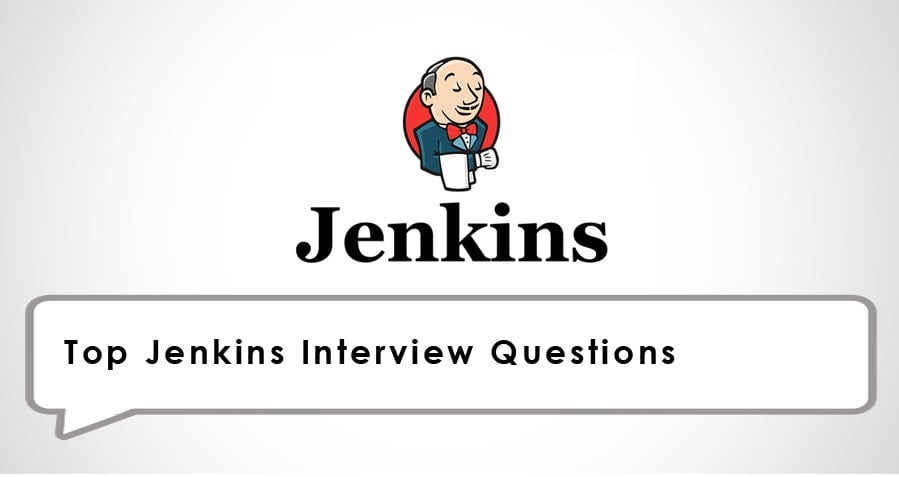Day 29:Jenkins Interview Questions
 Akshay Phadke
Akshay Phadke
Here are some Jenkins-specific questions related to Docker that one can use during a DevOps Engineer interview.
1)What’s the difference between continuous integration, continuous delivery, and continuous deployment?
Continuous Integration (CI), Continuous Delivery (CD), and Continuous Deployment (CD) are related software development practices that focus on making the software development process more efficient and reliable. The main differences between these three practices are:
Continuous Integration (CI): Merging code changes into a single codebase multiple times a day to quickly find and fix any problems. It is the practice of regularly integrating code changes into a single repository, usually multiple times a day. CI focuses on detecting and fixing integration issues.
Continuous Delivery (CD): Having the code ready to be released to production at any time through automation of the build, test, and deployment process. It is the ability to release software to production at any time, with a simple push of a button.
Continuous Deployment (CD): Automatically deploying code changes to production every time they pass the tests, without any manual intervention.
2)Benefits of CI/CD
The benefits of CI/CD can be summarized as follows:
1. Faster product delivery: Automated builds, testing, and deployment allow for faster delivery of new features and bug fixes to the end-users. With a smooth CI/CD workflow, multiple daily releases can become a reality. Teams can automatically build, test, and deliver features with minimal manual intervention.
2. Higher efficiency: Automated CI/CD pipelines can save time and effort compared to manual processes, freeing up resources for other tasks. You should automate your process if you have a review process that includes deploying code to development, testing, and production environments and entering multiple commands across several domains.
3. Reduced risk of defects: Automated testing and deployment reduce the risk of human error and ensure consistent, repeatable processes. You can test and deploy code more frequently using a CI/CD pipeline, giving testers the power to identify and fix errors as soon as they occur.
4. Improved quality: Regular testing and integration of code changes help identify and fix issues early in the development process.
5. Increased collaboration: CI/CD promotes collaboration between developers, QA, and operations, enabling them to work more effectively together.
6. Generate extensive logs: Logs are a rich source of information to understand what is happening beneath the UI and study application behavior. With a CI/CD pipeline, extensive logging information is generated in each stage of the development process.
3)What is meant by CI-CD?
CI/CD is the combined practice of continuous integration (CI) with continuous delivery or continuous deployment (CD). The purpose of CI/CD is to allow development teams to deliver code changes more frequently and reliably by automating the build, test, and deployment processes.
4)What is Jenkins Pipeline?
Jenkins Pipeline is a suite of plugins that supports implementing and integrating continuous delivery pipelines into Jenkins. A continuous delivery pipeline is an automated expression of your process for getting software from version control right through to your users and customers.
The pipelines are defined using a Groovy-based domain-specific language (DSL), which is easy to understand for both developers and non-developers alike. A Jenkins Pipeline consists of multiple stages, each representing a specific step in the software development process, such as building the code, running tests, and deploying the application. Each stage is defined using a series of steps, and the pipelines can be visualized and executed from within the Jenkins web interface.
5)How do you configure the job in Jenkins?
To configure a job in Jenkins, you need to perform the following steps:
1)Launch the Jenkins web interface: Open your web browser and navigate to the URL of your Jenkins server.
2)Log in to Jenkins.
3)Click on "New Item" in the left navigation menu: This will create a new job in Jenkins.
4)Enter a name for the job: In the "Item name" field, enter a name for your job.
5)Choose a job type: Jenkins supports various job types, including Freestyle projects, Maven projects, Pipeline projects, etc. Choose the type that best fits your needs.
6)Configure the job: Based on the type of job you selected, you will need to configure various settings, such as the source code repository, build triggers, build steps, build notifications, etc.
7)Save the job: After configuring the job, click on the "Save" button to save the job configuration.
8)Build the job: You can now build the job by clicking on the "Build Now" button in the left navigation menu.
6)Where do you find errors in Jenkins?
1)The build console output provides a detailed log of the build process, including any errors or warnings that may have occurred. You can access the build console output by clicking on a build number in the job's dashboard.
2)Jenkins generates various log files that can be used to diagnose issues and debug errors. You can access these logs from the "Manage Jenkins" >"System Log" page.
3)If you are using Jenkins Pipelines, the pipeline visualization provides a graphical representation of the build process. Any errors or failures in the pipeline will be indicated by a red dot or other visual cues.
7)In Jenkins how can you find log files?
To access this log, click the Manage Jenkins link on the right-hand side of the dashboard. Click the System Log button in the Status Information section. Click the All Jenkins Logs link to access the default log. Additionally, each build will have its own log files which can be accessed from the build page, click on the build number > Console Output. If you need access to the logs outside of the Jenkins UI, they can typically be found in the JENKINS_HOME/logs directory on the Jenkins server.
8)Jenkins workflow and write a script for this workflow?
Jenkins Workflow is a plugin that provides a suite of plugins that allows defining Jenkins continuous delivery pipelines using code as a script. The Jenkinsfile is written using a syntax based on the Groovy language and can include multiple stages, such as build, test, and deploy.
Here’s a template for a Jenkins pipeline script
COPY
COPY
pipeline {
agent any
stages {
stage('Build') {
steps {
echo 'Building..'
}
}
stage('Test') {
steps {
echo 'Testing..'
}
}
stage('Deploy') {
steps {
echo 'Deploying....'
}
}
}
}
9)How to create continuous deployment in Jenkins?
1)Create a Jenkins project: Go to Jenkins > New Item, choose either a Freestyle project or a pipeline project and give it a name.
2)Set up Source Code Management (SCM): Connect your SCM system, such as Git, to Jenkins and configure the repository and credentials.
3)Define Build Steps: Define the steps to build your code, such as compiling, testing, and creating a Docker image.
4)Define Deployment Steps: Define the steps to deploy your code, such as copying the build artifacts to the target server and executing scripts.
5)Automate Build and Deployment: Set up automatic triggers for the build and deployment steps.
6)Save and Run: Save the configuration and run the pipeline to test it.
7)Monitor: Monitor the pipeline to ensure that it runs smoothly and fixes any issues that arise.
10)How build job in Jenkins?
To build a job in Jenkins, you need to navigate to the job’s configuration page and specify the source code repository, build triggers, build steps, and post-build actions. Then, you can manually start a build by clicking the “Build Now” button, or you can configure the job to build automatically when code changes are pushed to the source control repository.
11)Why we use pipeline in Jenkins?
Jenkins pipelines simplify the software delivery process by automating the build, test, and deployment steps. They provide a clear, organized approach to delivering software, making it easier to manage, monitor, and scale. Pipelines help to improve the speed, quality, and reliability of software delivery. Jenkins Pipelines are used to automate the CI/CD process and make it easier to implement complex builds and deployments.
12)Is Only Jenkins enough for automation?
Jenkins can be enough for automation for simple projects, but for complex projects, additional tools may be required. It depends on the specific needs of the organization. Other tools commonly used with Jenkins for automation include: version control systems, test automation frameworks, deployment tools, containerization tools, and monitoring/logging tools. These tools can be integrated with Jenkins to provide a comprehensive automation solution.
13)How will you handle secrets?
Handling secrets, such as passwords, API keys, and confidential information, is a critical aspect of automation. Jenkins provides a built-in credentials system where you can store secrets and retrieve them as needed within your pipelines. You can use the credentials plugin to manage and secure these secrets. You can also store secrets as environment variables and access them within your pipelines. This is useful when secrets need to be passed to build agents or used in shell scripts.
14)Explain diff stages in CI-CD setup
The following are the common stages involved in a CI/CD setup:
Code Development: This is the stage where developers write code and commit it to a version control system like Git.
Code Build: Jenkins or another CI tool is used to build the code, compile it, and run tests to ensure that the code is working as expected.
Code Test: The code is tested using various testing techniques such as unit testing, integration testing, and functional testing to ensure that it meets the required quality standards.
Code Deploy: The code is deployed to a staging environment for further testing, or to a production environment if it meets the required quality standards.
15)Name some of the plugins in Jenkin?
Some popular plugins in Jenkins include:
1)Pipeline plugin for continuous integration and delivery
2)Git plugin for version control integration
3)Maven plugin for building and testing code
4)Artifactory plugin for managing binary artifacts
5)Slack plugin for communication and collaboration
6)Blue Ocean plugin for a modern user interface
7)JUnit plugin for testing code
8)EC2 plugin for dynamic provisioning of build agents
9)SonarQube plugin for code analysis
10)Ant plugin for building code.
Subscribe to my newsletter
Read articles from Akshay Phadke directly inside your inbox. Subscribe to the newsletter, and don't miss out.
Written by

Akshay Phadke
Akshay Phadke
Hello, I am Akshay Phadke I have 10 Yrs of Experience in various Technologies. Currently, I am learning a few DevOps tools. I am working on Microsoft Technologies and AWS